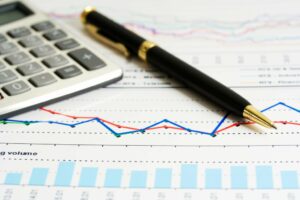
Closing entries transfer each revenue and expense account balance, as well as any balance in the Dividend account, into retained earnings. Revenues, expenses, and dividends are therefore referred to as temporary accounts because their balances are zeroed at the end of each accounting period. Balance sheet accounts, such as retained earnings, are permanent accounts because they have a continuing balance from one fiscal year to the next. The closing process transfers temporary account balances into a permanent account, namely retained earnings. This insight can help the company make informed decisions to streamline operations and improve cash flow management.
- An asset or liability account requiring adjustment at the end of an accounting period is referred to as a mixed account because it includes both a balance sheet portion and an income statement portion.
- This integration allows businesses to leverage existing systems and data, significantly enhancing overall efficiency and accuracy.
- Cash cycles usually analyze the cash flow in much more depth and tell a company how well they can manage their cash flow, while an operating cycle involves how efficiently the stock flows in and out.
- The $2,200 balance represents the unexpired asset that will benefit future periods, namely, the 11 months from February to December, 2015.
- The trial balance of Big Dog Carworks Corp. at January 31 was prepared in Chapter 2 and appears in Figure 3.4 below.
Posting the Closing Entries to the General Ledger
This adjustment gives a clearer view of cash flow efficiency and working capital management, showing the net duration for converting operational investments into cash. It is used to calculate accounts receivable turnover, inventory turnover, average collection period (accounts receivable days), and average payment period (inventory days). It is essential to understand the concept of the operating cycle formula as it helps to assess how efficiently a company is operating.
Helps to measure a company’s financial health
It combines the time for inventory turnover and receivables collection minus the payables period. The operating cycle is calculated by adding the inventory period (time taken to sell the inventory) and the accounts receivable period (time taken to collect payment after a credit sale). Employers looking to streamline their operations and boost profitability should pay close attention to their operating cycles.
What are normal operating cycles?
- An analyst can use this cycle to understand a company’s operating efficiency.
- Businesses operating in a global context face additional challenges related to geopolitical events, natural disasters, or disruptions in the supply chain.
- Toyota’s production system utilizes a lean manufacturing system which reduces waste and continuously improves the inventory system by constantly evaluating it.
- Therefore, while the operating cycle focuses solely on the time to turn inventory into cash, the cash cycle provides a fuller picture by factoring in how long the company can delay payments to suppliers.
- We now know that an adjusted trial balance must be used to prepare financial statements.
- Recall that an unadjusted trial balance reports account balances before adjusting entries have been recorded and posted.
Ask your customers for upfront payment or some deposits as it’ll help to improve the operating cycle. The operating cycle of working capital helps one measure the financial health of a company. Evaluating the operating cycle would reveal how efficiently the assets of a company are being used. After all, efficient usage of a company’s assets has an important role in capital intensity, return on investment (ROI), and fixed overhead turnover. On the other hand, if a company has the longest cycle, it means that it takes a long time to convert its inventory purchases into cash.

In today’s competitive job market, both job seekers and employers face numerous challenges. Job seekers often struggle to find the right opportunities that align with their skills and interests, while employers are constantly seeking ways to streamline their operations and improve efficiency. One crucial aspect of business operations that can impact both job seekers and employers is the concept of an operating cycle. A company with an extremely short operating cycle requires less cash to maintain its operations, and so can still grow while selling at relatively small margins.

We will also shed some light on how it works, how one can calculate it, and how to make it insightful for your business. This results in transferring the balance in dividends, a temporary account, to retained earnings, a permanent account. The equipment was recorded as a plant and equipment asset because operating cycle formula it has an estimated useful life greater than 1 year. Assume its actual useful life is 10 years (120 months) and the equipment is estimated to be worth $0 at the end of its useful life (residual value of $0). On January 15, Big Dog received a $400 cash payment in advance of services being performed.
What are some examples of businesses with high or low operating cycles?

The operating cycle (OC) differs from the cash conversion cycle (CCC) in that the OC does not allow for the accounts payable payment period. The OC measures the time difference between the purchase of inventory and the collection of cash unlike the CCC which measures the time difference between the payment for inventory and the collection of cash. The accounts receivable collection period is the average number of days it takes to collect accounts receivable. When a business trades, it purchases goods, holds them as inventory, converts them to a product for sale and sells them on credit, and finally it collects the cash from the sale.
Expert Insights on Managing Operating Cycles
Additionally, expenses would be understated on the income statement causing net income to be overstated. If net income is overstated, retained earnings on the balance sheet would also be overstated. In the complex realm of business, mastering the operating cycle is indispensable for achieving sustained success. This journey involves a nuanced understanding of its core components, adept navigation through challenges, and a proactive embrace of future trends. From the procurement of raw materials to the intricacies of sales and delivery, businesses that prioritize efficient operating cycle management position themselves as resilient contenders in the competitive landscape. Efficient operating cycles play a crucial role in the success and sustainability of businesses across various industries.
